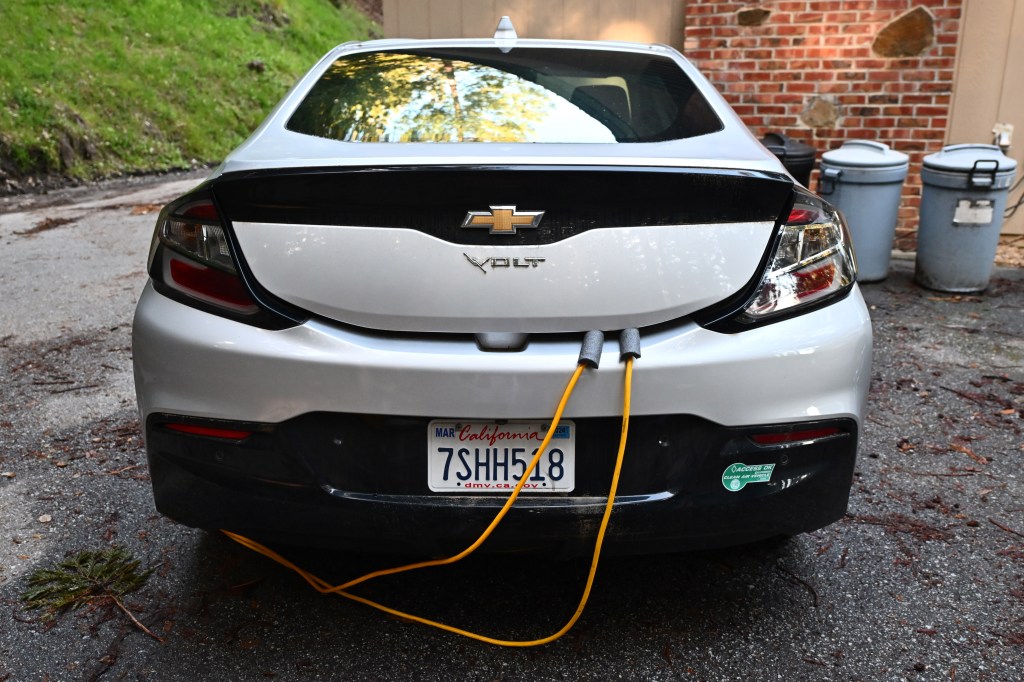Electric vehicles provide energy storage, on wheels. But until now, this has been an untapped resource, unable to help shore up the power grid and back up homes and businesses during outages.
On Saturday, Governor Gavin Newsom signed a new law that will help harness that energy. SB 59, proposed by State Sen. Nancy Skinner, D-Berkeley, authorizes the California Energy Commission, the state agency in charge of energy policy, to require that all new electric vehicles sold in the state are equipped with so-called “bidirectional” charging by 2027 — not just pulling energy, but sending it back.
“After another summer of deadly heat waves and wildfires, Californians will soon be able to rely on electric vehicle batteries to avoid blackouts instead of dirty fossil fuels,” according to Ellie Cohen, CEO of the Santa Rosa-based Climate Center, which co-sponsored the bill with the Union of Concerned Scientists and Nuvve, which designed a vehicle-to-grid technology.
Electric car batteries can hold approximately 60 kilowatt hours of energy, enough to provide backup power to an average U.S. household for two to three days — or far longer, if the home’s electrical use is conserved.
Meanwhile, state residents face a growing threat of rolling blackouts as the power grid is overtaxed during periods of peak demand, such as during heat waves like the one hitting the Bay Area this week. Consumers also experience blackouts during hot and windy days, when Pacific Gas & Electric implements public safety power shutoffs designed to protect the public from wildfires. Last winter’s parade of atmospheric rivers were another source of widespread power losses.
Now, most EVs have one-direction charging. Power is taken from the grid and charges the car’s battery.
By harnessing the untapped battery storage capacity of electric vehicles, California can address three challenges at once: cleaning up the air while keeping the lights on and reducing energy bills.
Only the Nissan Leaf, Kia EV-6, Hyundai Ioniq 5 and Ford F-150 Lightning offer built-in “bidirectionality” to homes or the grid. Tesla recently announced that its vehicles will be “bidirectional” by 2025.
Santa Cruz Mountains resident Tammy Snyder, who plugged in her EV during last year’s fierce winter storms to charge the batteries that run her phone, laptop, electric blanket, camp light, flashlights, power tools and a comfy heating pad, said “bi-directional charging will be a game changer. Electric vehicles with bi-directional charging can function as storage batteries, creating a more resilient electrical grid.”
“If a power outage occurs, people with bi-directional charging can ride out the outage in relative comfort for quite a long time,” said Snyder, whose home is more than a dozen miles away from the comfort of the nearest town. “One EV battery can power a refrigerator and other important devices for days.”
California is already far ahead. Last year, 25% of new cars sold in California were zero-emission, far outpacing the nationwide rate of 9.3%.
This year, the state announced a new $1.9 billion plan that will help deploy 40,000 new public EV chargers – creating the most extensive charging network in the country to make it easier for Californians to charge their vehicles.
California’s cars will have 60,000 megawatts of stored energy in batteries by 2030, according to Siva Gunda of the California Energy Commission. If only 10% of that could be returned to the grid, far fewer backup generators would be needed, he said.
Skinner’s effort comes as the Biden administration sets the stage for a major national expansion of EV use. The U.S. Environmental Protection Agency proposed strict new limits on emissions that would require as many as two-thirds of new vehicles sold in the U.S. to be electric by 2032. That’s a nearly tenfold increase over current electric vehicle sales.
Because California has such a large market for cars, the new law could lead to a nationwide change in auto standards, said Kat Snyder of 350 Silicon Valley – Palo Alto Climate Action, an environmental group.
“Bidirectional charging will help with electric grid stability and, as is often the case with wildfires, can help local communities keep the lights on when the power goes down,” she said.
“We only have so long to reduce emissions to avoid the worst effects of climate change,” she said, “and California’s role here is to move the automobile marketplace.”
Originally Published:
